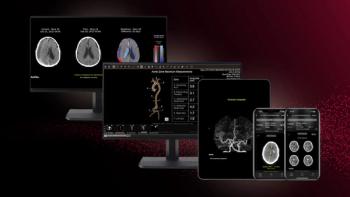
CT Use on Children in ER Explodes
The use of CT scans on children in the emergency room has risen more than fivefold since 1995, according to a study coming out this week in Radiology online, to be published in the June print issue.
The use of CT scans on children in the emergency room has risen more than fivefold since 1995,
The reason for the increase is advancements like helical scanning in CT technology, which helps physician more rapidly evaluate patients and get better quality images. Also, scan times have decreased from minutes to seconds, so children don’t usually need to be sedated, according to lead author, David B. Larson, MD, MBA, director of quality improvement in the Department of Radiology at Cincinnati Children’s Hospital Medical Center in Ohio.
Researchers studied data from 1995 to 2008 from the National Hospital Ambulatory Medical Care Survey. They found that during this time period, pediatric
Researchers noted that abdominal CT rates increased the most because of technological improvements. Abdominal scans were rarely used in 1995, but in the last four years of the data, 15 percent to 21 percent of the exams that used CT scans included an abdominal scan.
“In 1995, abdominal CT took much longer, the resolution was not as good and the research hadn’t been done to support it,” said Larson in a statement. “By 2008, helical scanning had helped make CT very useful for abdominal imaging. It’s widely available, it’s fast and there are a lot of great reasons to do it, but it does carry a higher radiation dose.” He noted that abdominal CTs have up to seven times the effective radiation dose as a head CT.
Almost 90 percent of children’s ER visits that involved CT use took place at non-pediatric focused facilities, which the authors say have several implications. They opine that these radiology departments might not consistently tailor the CT technique to the child’s size, and that there’s a high likelihood that the interpreting radiologist has no specialized training in pediatric radiology.
Larson cautions that treating physicians need to work together to ensure that the appropriate scanning indications and techniques are used to minimize unnecessary pediatric exposure to radiation.
Newsletter
Stay at the forefront of radiology with the Diagnostic Imaging newsletter, delivering the latest news, clinical insights, and imaging advancements for today’s radiologists.



























